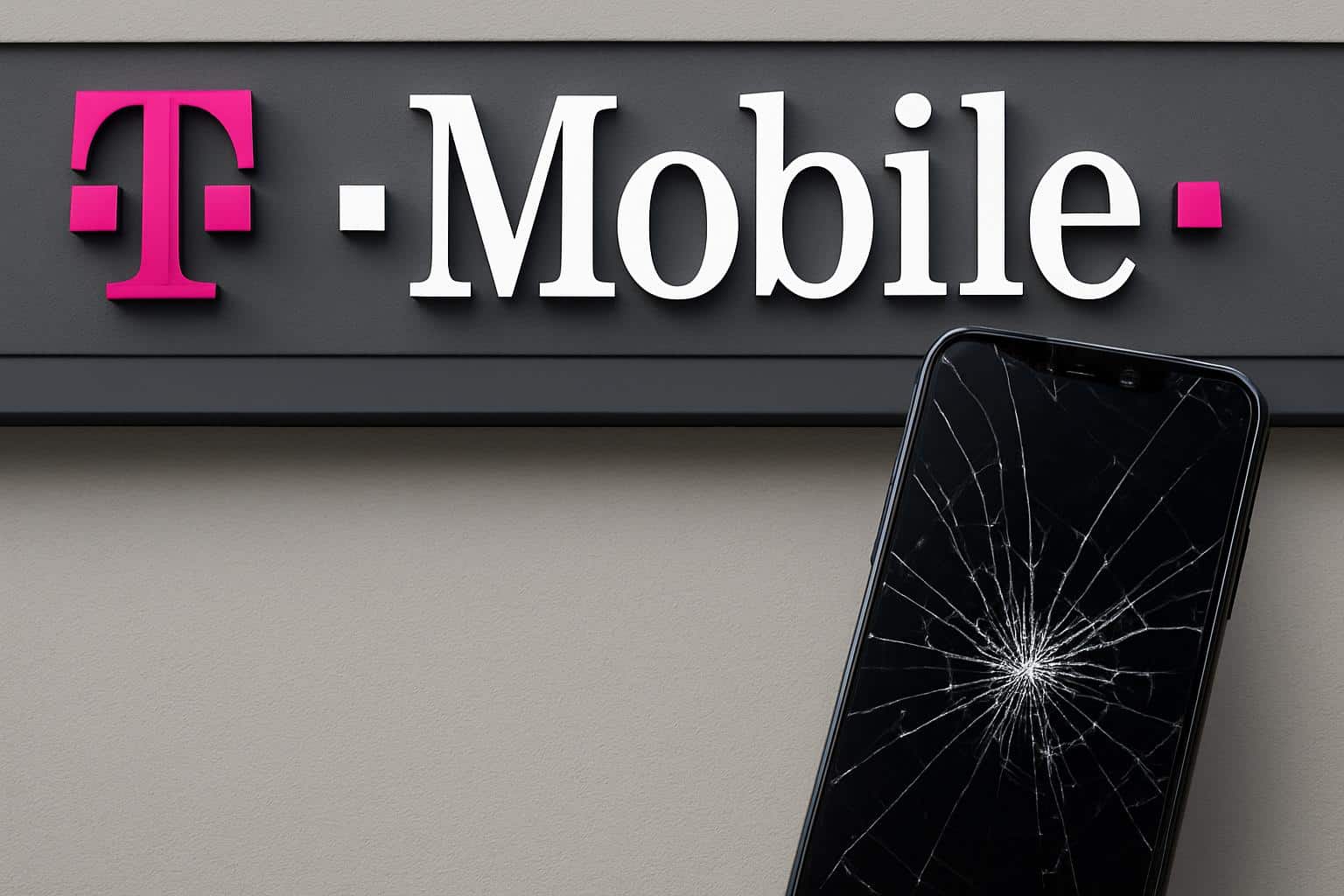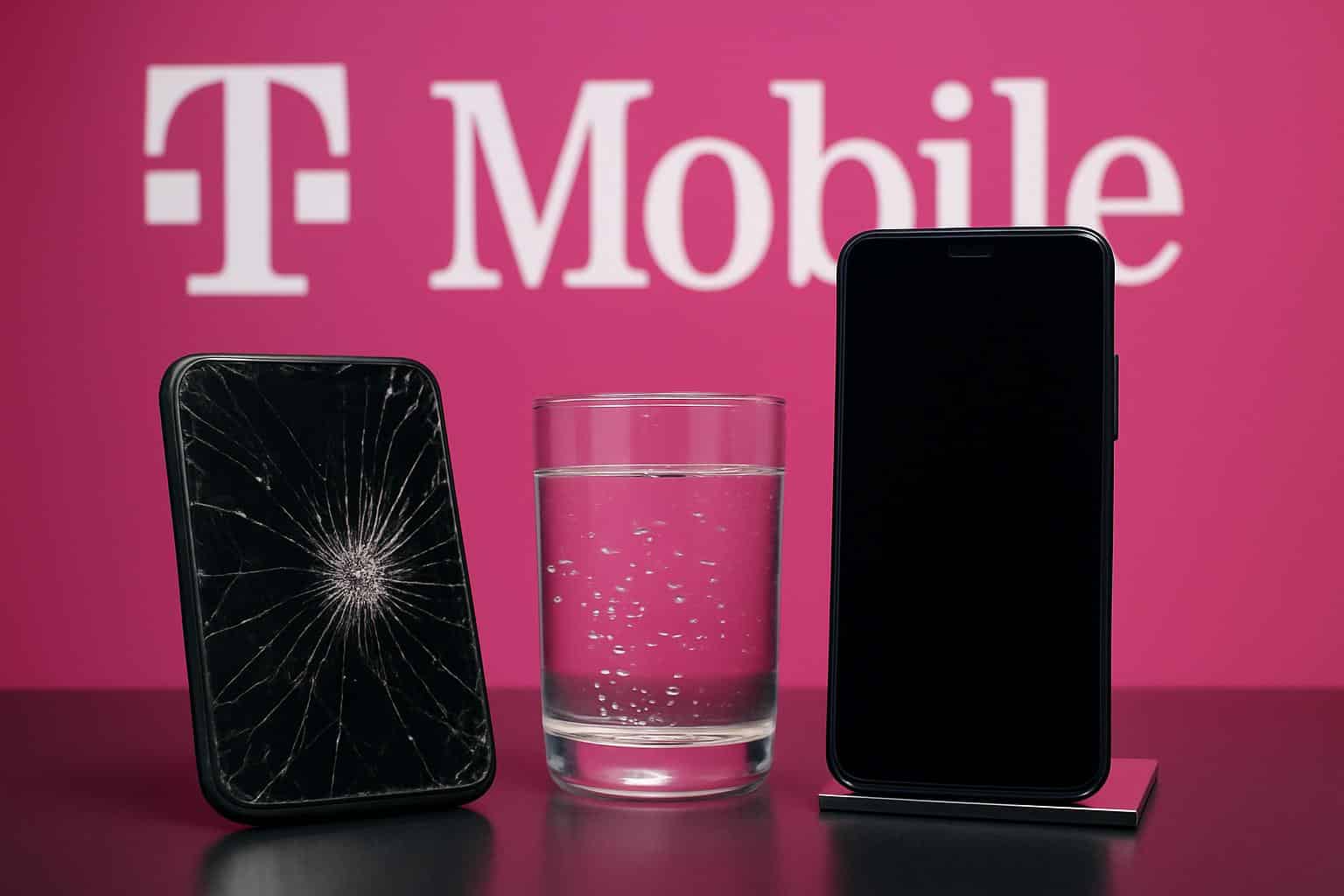T-Mobile is apparently preparing to make it cheaper for you to upgrade if you have a cracked, scuffed, or water-kissed phone.
Internal documents cited by The Mobile Report show the carrier will take broken devices on high-value promos in exchange for a diminished but assured trade-in credit.
- What the leaked documents suggest about trade-in changes
- How the payouts would work under the rumored policy
- Why T-Mobile might relax trade-in rules for damaged phones
- Understanding the 30-day on-network requirement and IMEI use
- Real-world scenarios of how damaged trade-ins might be valued
- How this potential policy compares with other trade-in programs
- Caveats, limitations, and what to watch before trading in

What the leaked documents suggest about trade-in changes
The new policy embraces 3 key themes:
- Damage-based trade-in value
- Eligibility defined more by the value of the trade-in
- The device’s IMEI being active on T-Mobile’s network for at least 30 days in the past year
In simple terms, the carrier would still accept your dinged phone — but under straightforward rules as to how much it’s worth and whether it qualifies for those promo credits.
How the payouts would work under the rumored policy
According to the leak, phones with damage like cracked screens or liquid damage that still power on could earn you 50% of what those devices would fetch as part of the same promotion if they were in a good state. Devices that won’t power on or are still locked with features like Find My enabled would be ineligible, according to the report. There seems to be a tiered setup that also determines how much in promotional value you get based on your plan (higher-end plans equate to higher “tier” credits).
The documents also cite promotions toward Google and Motorola flagship models with headline credits of up to $1,000 for eligible trades. Under the speculated damage policy, that would mean you could get about half of the top credit for a broken handset (otherwise qualified) — potentially hundreds of dollars returned even if your screen is spiderwebbed.
Why T-Mobile might relax trade-in rules for damaged phones
There’s also clear upside for the carrier. Taking in damaged phones helps ease upgrade friction, keeps churn down, and funnels more used phones into refurbishment or recycling channels. Industry estimates from companies like SquareTrade and Asurion have in the past underscored the degree to which cracked screens are an issue in the U.S., counting tens of millions of damaged devices every year, as well as billions spent on repairs and replacements. Meeting customers where they are — sometimes with imperfect phones — can be a powerful acquisition and retention tool.
Understanding the 30-day on-network requirement and IMEI use
The claimed use of IMEI — evidence that the device was in use on T-Mobile’s network for 30 days out of the last 12 months — sounds like a fraud-prevention measure.

It mitigates arbitrage, such as if people are buying salvaged phones in bulk and dumping them for promo credits, and creates incentives to prefer existing customers who have used the service recently.
Real-world scenarios of how damaged trade-ins might be valued
So if you’re rocking a cracked-display phone on T-Mobile, the rumored policy suggests it might still boot up, so don’t be surprised to see the promotional value cut in half (that’s $100–$200 down from current value) when you trade up to another iPhone — of course, it would depend on your plan and available applicable promotions.
If a device is received dead on arrival, or is still locked with anti-theft features, don’t expect any credit. “Table stakes,” beyond which it is tough to call any measure effective, are backing up your data, performing a factory reset, and turning off activation locks.
How this potential policy compares with other trade-in programs
Carriers run “any year, any condition” promotions with caveats occasionally, but most trade-in programs look for hardware that’s working just fine. For example, Apple’s official trade-in heavily discounts or denies devices with cracked glass, while some carrier promos have allowed cracked screens if a device turns on and isn’t blacklisted. A standing 50% rule on damaged-but-working phones would make T-Mobile’s offerings more transparent and competitive if widely adopted.
Caveats, limitations, and what to watch before trading in
(This hasn’t been confirmed by T-Mobile, and promotion terms can be changed whimsically.) Look for fine print on eligible models, plan tiers, financing terms, activation locks, and device condition. It is also possible that even if your phone does not qualify, it might still get some promotional value per the leak’s reference to trade-in value-based qualifying orders.
Bottom line: If the policy goes through as described, customers with cracked screens or water damage that doesn’t kill the phone will see meaningful money off a new flagship. That could be a welcome change for a market rife with flawed phones.

